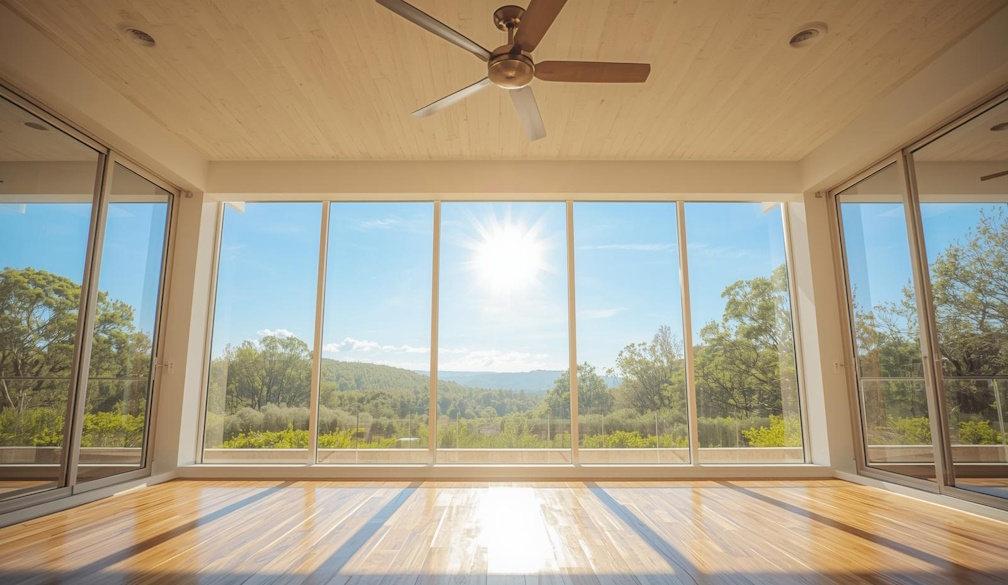Why Buying Ceiling Fans Online Is the Smartest Way to Upgrade Your Home Comfort
- Written by Auzzi Shopping

More homeowners today prefer to buy ceiling fans online because the process is simpler, faster, and far more convenient than traditional in-store shopping. Ceiling fans play an important role in keeping homes cool, maintaining airflow, and reducing electricity costs. With so many modern designs, motor types, and smart features available, online platforms make it easier to compare, research, and select the perfect fan without any pressure or limitations.
When you buy ceiling fans online, you provide instant access to a wide range of ceiling fans suitable for bedrooms, living rooms, outdoor areas, home offices, and commercial spaces. Whether you're renovating, building, or simply replacing an old fan, buying online helps you make confident decisions with the help of detailed product descriptions, customer reviews, and helpful buying tools.
A Wider Selection Than Any Physical Store Can Offer
One of the biggest advantages of buying online is the access to a much larger range of ceiling fan models. Physical stores can only display a limited selection due to space restrictions.
This variety allows homeowners to find fans that perfectly match their interior style. From sleek modern designs to timber-blade fans, outdoor fans, and energy-efficient DC motor fans, online browsing ensures you never settle for limited choices.
Easier Comparison Between Brands and Features
Shopping online makes comparing products straightforward. Instead of relying solely on in-store explanations, you can compare multiple models side-by-side with complete transparency.
This level of comparison helps you understand the differences between models and choose based on performance rather than guesswork. You can efficiently find fans that suit both your needs and your budget.
Customer Reviews for Honest Feedback
In physical stores, you rarely get to speak with people who have actually used the fan you’re considering. Online reviews provide helpful insights from real buyers.
This real-world feedback is valuable because it helps you avoid models that look good on paper but may not perform well in practice. Reviews also help you understand whether the fan is suitable for particular room sizes or ceiling heights.
Better Prices and Frequent Online Deals
Online retailers often offer lower prices because they don’t carry the overhead of physical stores. These deals make it easy to buy high-quality fans without exceeding your budget. When renovating or outfitting multiple rooms, these savings add up quickly.
Convenience and Flexibility in the Buying Process
Buying ceiling fans online eliminates the need to travel, wait for assistance, or deal with limited store hours. You can browse products anytime—morning, night, or weekends—and take as much time as needed to decide.
Product pages include detailed specifications, dimensions, installation guides, and high-quality images. Some websites also feature videos showing the fan in action, helping you visualise how it will look in your home.
Choosing the Right Size Made Easy
Selecting the correct fan size is essential for effective airflow. Online stores typically offer detailed room-size charts that guide you toward the right blade diameter for different spaces. This ensures you avoid the common mistakes of buying:
A fan too small for a large room
A fan too large for a compact room
Correct sizing improves comfort and ensures efficient airflow.
Smart Features and Modern Functionality
Online platforms highlight fans equipped with advanced features such as:
Smartphone or voice control
Remote operation
Energy-saving DC motors
Integrated LED lighting
Reverse airflow mode
These features provide convenience and improve the fan’s efficiency. Buying online makes it easy to compare these modern options and choose the ones that suit your lifestyle.
Fast Delivery and Easy Returns
Most online retailers offer fast home delivery, which is especially helpful when buying multiple fans or large models. You don’t have to worry about transport or fitting boxes into your vehicle.
If a fan doesn’t match your expectations, many platforms offer easy return or exchange policies. This level of flexibility is one of the biggest advantages online shopping has over in-store buying.
Why Ceiling Fans Remain a Reliable Home Cooling Solution
Ceiling fans are an affordable and effective way to improve comfort. They support cooling in summer and help circulate warm air during winter when used in reverse mode. They also work well alongside air conditioners by distributing cool air more evenly, reducing electricity usage and extending the life of your cooling system.
Their low running cost, minimal maintenance needs, and long lifespan make them a smart investment for any home.
Conclusion
Buying ceiling fans online provides a more efficient, flexible, and cost-effective way to upgrade your home’s comfort. With access to a wider range of styles, easy comparisons, real user reviews, competitive pricing, and convenient delivery, online shopping makes it easier than ever to find the perfect fan for any room.

